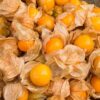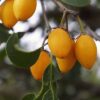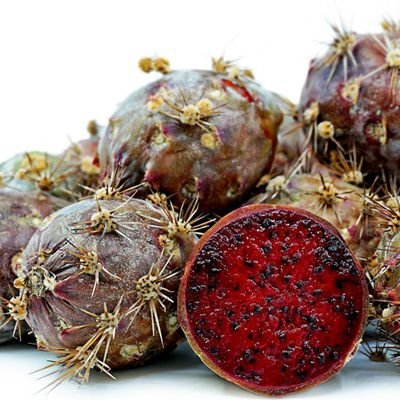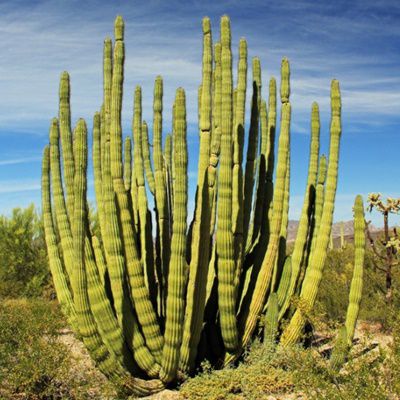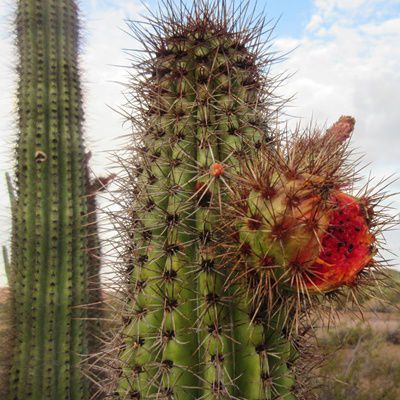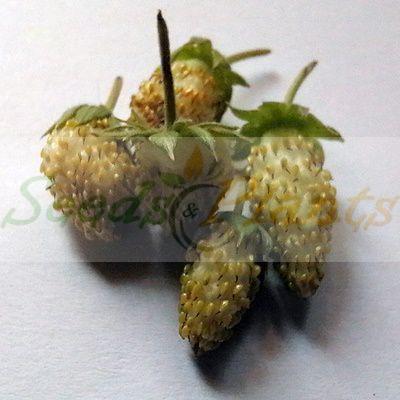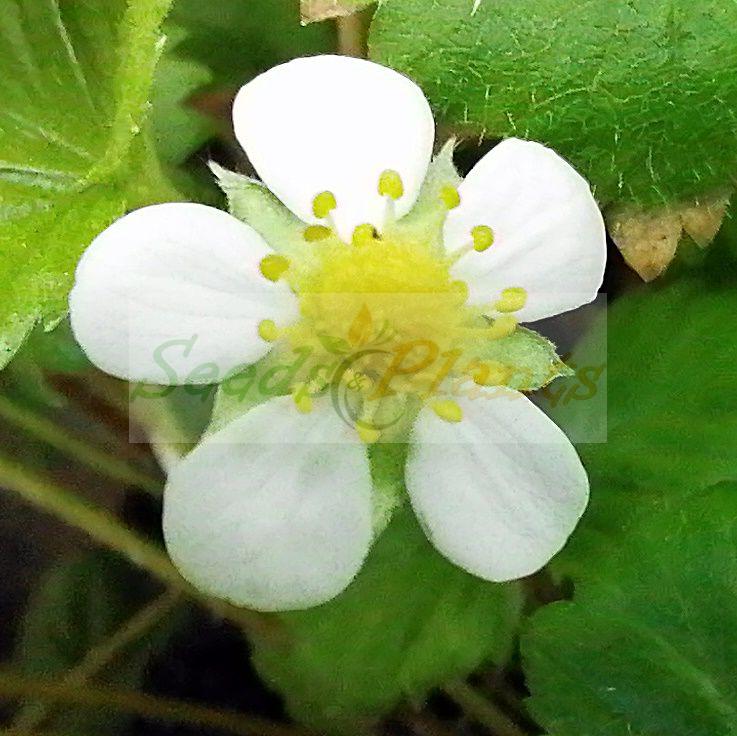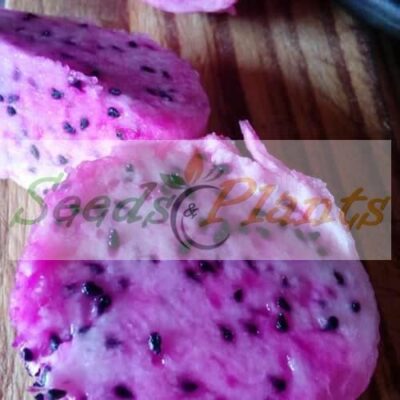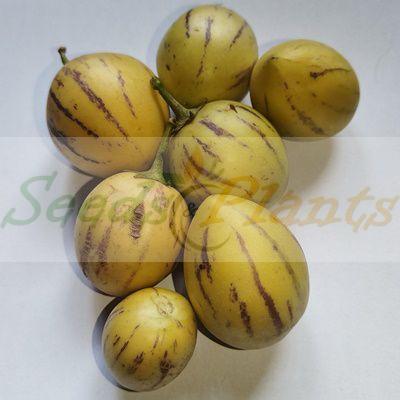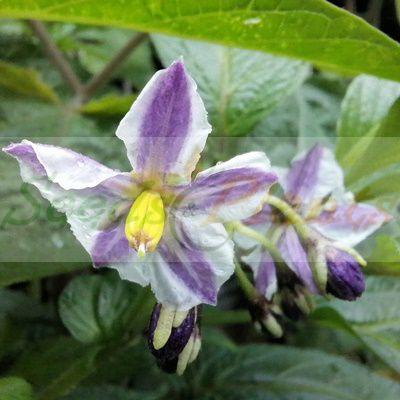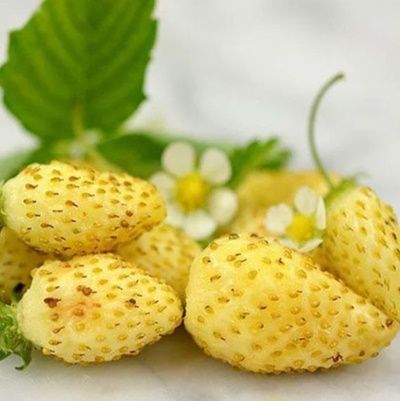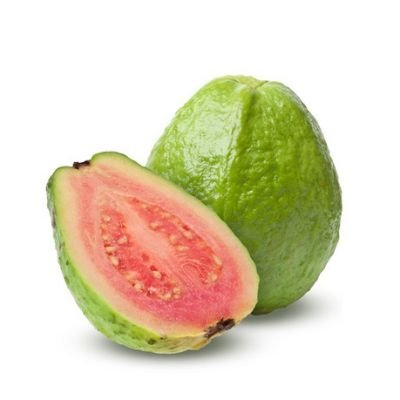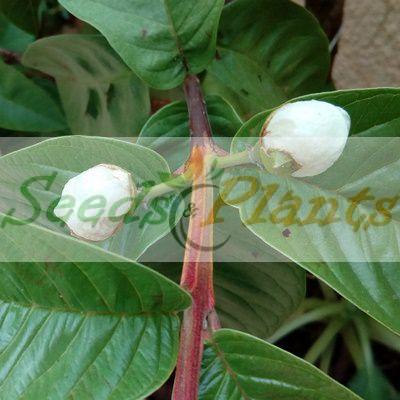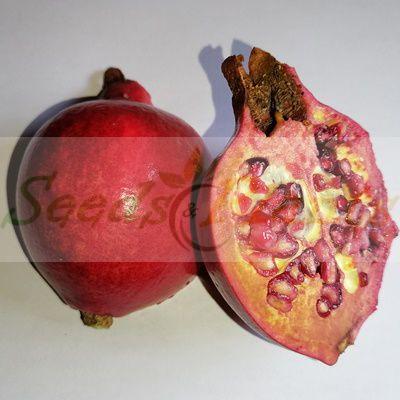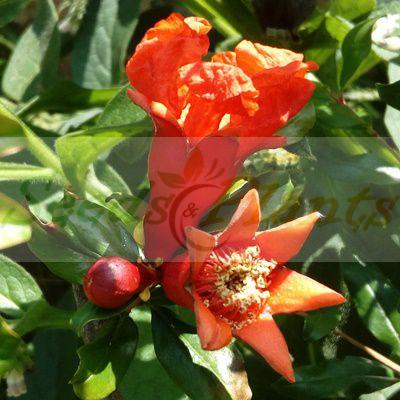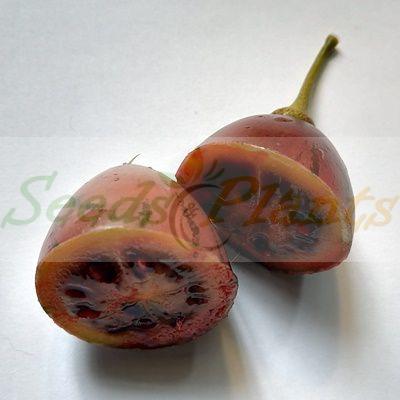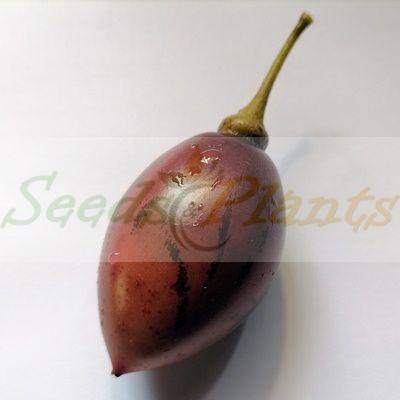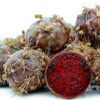🌵 Plant Quick Facts
Plant Info
- 🌍 Origin / Region: Mexico
- 🌸 Flower Color: White
- 🦋 Pollinator Method: Attracts Bats, Attracts Hawkmoths, Attracts Hummingbirds
Growth Traits
- 🌱 Life Cycle: Perennial
- 🌾 Plant Type: Cactus
- 🪴 Growth Habit: Slow Growing, Upright
Growing Requirements
- 🌞 Sun Exposure: Full Sun
- 💧 Water Needs: Avoid Overwatering, Low Water, Water Deeply
- ☀️ Growing Conditions: Drought Tolerant, Frost Sensitive, Heat Tolerant, Not Cold Tolerant
- 🟤 Soil Preference: Gravel, Loam, Sandy, Well-Drained
Organ Pipe Cactus – 10 Seeds
(Stenocereus thurberi)
R30.00
The Organ Pipe cactus plant produces edible rounded shaped fruit about the size of a tennis ball. The internal flesh of the fruit is succulent with a sweet-tart flavor. The fruit is also known as Pitahaya dulce or Sweet Pitaya.
Indoor Sowing: Spring and Summer.
Direct Sowing: Spring and Summer.
In stock
🌵 Plant Quick Facts
Plant Info
- 🌍 Origin / Region: Mexico
- 🌸 Flower Color: White
- 🦋 Pollinator Method: Attracts Bats, Attracts Hawkmoths, Attracts Hummingbirds
Growth Traits
- 🌱 Life Cycle: Perennial
- 🌾 Plant Type: Cactus
- 🪴 Growth Habit: Slow Growing, Upright
Growing Requirements
- 🌞 Sun Exposure: Full Sun
- 💧 Water Needs: Avoid Overwatering, Low Water, Water Deeply
- ☀️ Growing Conditions: Drought Tolerant, Frost Sensitive, Heat Tolerant, Not Cold Tolerant
- 🟤 Soil Preference: Gravel, Loam, Sandy, Well-Drained
The Organ Pipe Cactus (Stenocereus thurberi) is a member of the Cactaceae family and is native to Mexico and the United States where it is found in rocky desert. The cactus has several narrow stems that rise vertically, growing from a single short trunk just above the ground level. These stems are about 15 cm thick and grow to a height of 5m. These stems rarely branch but rather grow annually from the tip of the last growth. A mature plant can reach a width of 3.5m. Each stem has twelve to nineteen 10 mm high ribs that bear dark brown to black spines that turn gray as it matures.
It is a very slow growing cactus. It is not until the plant reaches around 35 years in age, that funnel-shaped creamy white flowers are produced for the first time during Spring and Summer. The flowers open at night and close by the morning. The flowers are usually pollinated by bats. The plant produces edible rounded shaped fruit about the size of a tennis ball. The exterior of the fruit has clusters of sharp, spiky protrusions. The skin of the fruit is a dusty rose color and it is often covered in splotches of pale yellow. Once the fruit is fully ripe most of the spines will fall off and the skin of the fruit will begin to crack revealing a deep red flesh. The internal flesh of the Organ Pipe cactus fruit is succulent with a sweet-tart flavor and is speckled with numerous tiny black seeds. The fruit is also known as Pitahaya dulce or Sweet Pitaya.
Growing Organ Pipe Cactus
Indoor Sowing: Spring and Summer.
Direct Sowing: Spring and Summer.
- Soak the seeds in water for 24 hours.
- Fill a small pot with cacti potting soil or create your own soil mixture by combining 3 parts potting soil, 3 parts sand, gravel, or grit, and 2 parts perlite or pumice.
- Plant 2 – 3 seeds on the surface of the soil and barely cover the seeds with a very fine layer of grit, as this cactus species needs light to germinate.
- Water the soil well.
- Place the pot in strong, indirect light where it will stay warm.
- Spray the surface of the soil regularly with water so the seeds don’t dry out.
- Growth is very slow, so a lot of patience is required after germination has taken place.
- Tolerant of light frost, but intolerant of hard freezes.
Can this plant be used for culinary purposes?
Organ Pipe Cactus is traditionally used for culinary purposes such as jams and jellies and juices and syrups.
Disclaimer
Medicinal Information:
All medicinal information on this website is for educational and informational purposes only and may not be construed as medical advice. The information is not intended to replace medical advice or treatment offered by healthcare professionals.
Seeds, Plants, Plant Cuttings, Geophytes and Dried Herbs:
In some countries and provinces, certain plants are deemed as invasive and are not allowed to be planted at all, whilst some plants are allowed to be grown only in certain areas or provinces. The onus is on you as the buyer to familiarize yourself with the regulations pertaining to your location, before purchasing any of our seeds, plants, plant cuttings, geophytes or dried herbs. We will not be held liable, should you purchase any seeds, plants, plant cuttings, geophytes or dried herbs. from us which are prohibited in your country or province.

